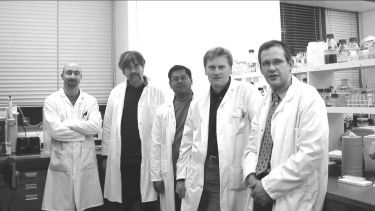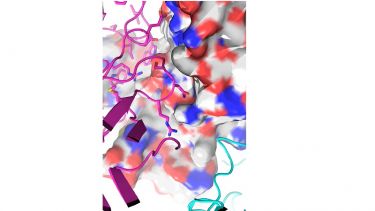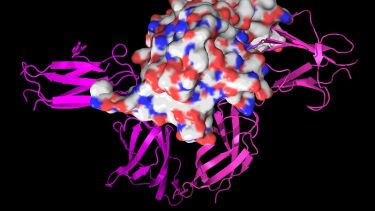Commercial impact of a Sheffield Spin-out: Asterion Ltd
Many drugs require frequent injections, making them inconvenient, unattractive to patients and increasing the risk of infection.

Asterion Ltd is a spin-out drug development company specialising in technology designed to reduce the frequency of such injections. It was founded in 2000 by three University of Sheffield academics and has raised investment funding of £1,055,000 since 2008. Asterion has also attracted licensing income from two overseas pharmaceutical companies, clearly showing an influence on trading and collaborations with industry. In addition, since January 2008, Asterion Ltd has invested over £1million on its research and patents. Asterion holds 9 US patents on which all the named inventors are University of Sheffield staff. Total research and licensing income for the period was £960,000.
What led to the impact:
The University of Sheffield and the Asterion cofounders filed a patent application on engineered growth hormones and other cytokines commencing in 2000 (inventors: Ross, Artymiuk and Sayers). In total, over 200 applications have been filed since 2000, with a total of 27 granted patents (including 7 US patents [S6]), and 23 applications still pending [S2].
Artymiuk, Ross and Sayers co-founded the spin-out Asterion Ltd, in 2000 using an initial investment of £125,000 from the White Rose Technology Seedcorn Fund (which had been created in 1999 through the DTI’s University Challenge competition).
The cofounders sought to raise venture capital or collaborative research and development (R&D) funding by presenting their proposal to potential investors including private enterprise, corporate VCs (e.g. Novartis Ventures, 3M, J&J Development Corporation) and to international pharmaceutical companies e.g. GSK, Sanofi, Merck, Pfizer, and Ipsen. These presentations contributed to Asterion signing an R&D deal with [text removed for publication] in 2003, and attracting a second investor (see below). From incorporation to 31 December 2007, Asterion attracted investments of £820,000 plus research and licensing income of £858,110.
Biofusion Ltd (later to become Fusion IP plc) invested £250,000 in Asterion in 2006 [S1]. Asterion Ltd and [text removed for publication] entered into a joint R&D deal in the area of growth hormone (2003) [S3], which ultimately led to licensing milestone payments in 2009. In early 2008 Asterion entered into a similar deal with [text removed for publication], which also led to licencing income during the period [S1]. These developments led to Asterion Ltd receiving a total of £532,959 during the REF census period.
Sources to corroborate the impact:
S1. Documentary evidence of licensing agreements and investments can be obtained from Company Secretary, Asterion Ltd, The Innovation Centre, 217 Portobello, Sheffield, S1 4DP, UK.
S2. Details of patent filings and grants can be made available from Asterion Ltd’s Patent Attorney: Director, Symbiosis IP Limited, Apollo House, Eboracum Way, Heworth Green, York YO31 7RE, UK.
S3. [text removed for publication].
S4. BBSRC Business Magazine, July 2008, cover and article (page 6) features Asterion’s work.
S5. BBSRC “Delivering Excellence with Impact – Annual Reports and Accounts 2008-2009. Page 24 highlights BioFusion’s investment into Asterion Ltd.
S6. All granted US patents can be accessed via the United States Patent Office web site: http://patft.uspto.gov/netahtml/PTO/search-bool.html US Patent numbers: 8,470,559, 8,293,709, 8,273,552, 07524649, 07625998, 07446183 and 08173782.
References to the research:
Sheffield authors in bold. * denotes corresponding author.
R1. A Short Isoform of the Human Growth Hormone Receptor Functions as a Dominant Negative Inhibitor of the Full-Length Receptor and Generates Large Amounts of Binding Protein. Ross, RJM*, Esposito, N, Shen, XY, Von Laue, S, Chew, SL, Dobson, PRM, Postel-Vinay, M.-C. Finidori J (1997) Molecular Endocrinology, 11, 265-73. doi: 10.1210/me.11.3.265
R2. Fusion protein comprising growth hormone and growth hormone receptor. Ross, R, Artymiuk P and Sayers J. Granted US Patent No. 7,446,183, November 2008. Originally published as PCT/GB01/02645 in 2001.
R3. A ligand-receptor fusion of growth hormone forms a dimer and is a potent long-acting agonist. Wilkinson IR, Ferrandis E, Artymiuk PJ, Teillot M, Soulard C, Touvay C, Pradhananga SL, Justice S, Wu Z, Leung KC, Strasburger CJ, Sayers JR, Ross RJ* (2007) Nature Medicine, 13, 1108-1113. doi: 10.1038/nm1610
R4. Cytokine hormones: Designed to linger. Flight, M.H. (2007) Nature Reviews Drug Discovery, 10, 783, doi: 10.1038/nrd2430) and Ho K: F1000Prime doi: 10.3410/f.1091056.544439 F1000Prime.com/1091056#eval544439)
R5. Immunogenicity, toxicology, pharmacokinetics and pharmacodynamics of growth hormone ligand-receptor fusions. Ferrandis E, Pradhananga SL, Touvay C, Kinoshita C, Wilkinson IR, Stafford K, Wu Z, Strasburger CJ, Sayers JR, Artymiuk PJ, Ross RJ* (2010) Clinical Science (London). 119: 483-491. doi: 10.1042/CS20100241


